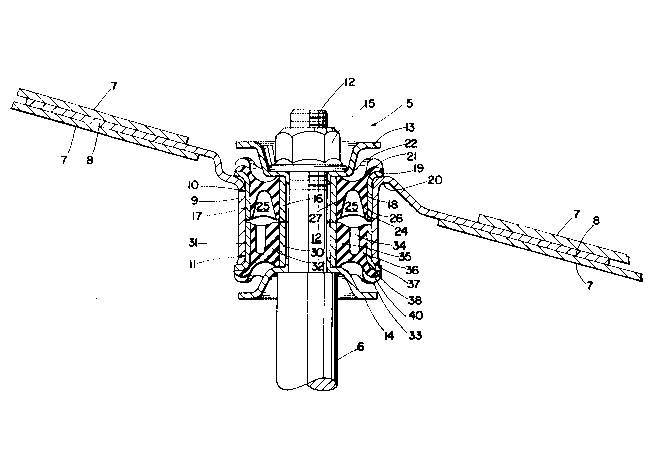Some of the information on this Web page has been provided by external sources. The Government of Canada is not responsible for the accuracy, reliability or currency of the information supplied by external sources. Users wishing to rely upon this information should consult directly with the source of the information. Content provided by external sources is not subject to official languages, privacy and accessibility requirements.
Any discrepancies in the text and image of the Claims and Abstract are due to differing posting times. Text of the Claims and Abstract are posted:
| (12) Patent: | (11) CA 2041796 |
|---|---|
| (54) English Title: | DUAL SHOCK MOUNT |
| (54) French Title: | ANCRAGE D'AMORTISSEUR |
| Status: | Expired and beyond the Period of Reversal |
| (51) International Patent Classification (IPC): |
|
|---|---|
| (72) Inventors : |
|
| (73) Owners : |
|
| (71) Applicants : |
|
| (74) Agent: | SMART & BIGGAR LP |
| (74) Associate agent: | |
| (45) Issued: | 1994-08-02 |
| (22) Filed Date: | 1991-05-03 |
| (41) Open to Public Inspection: | 1992-04-02 |
| Examination requested: | 1991-05-03 |
| Availability of licence: | N/A |
| Dedicated to the Public: | N/A |
| (25) Language of filing: | English |
| Patent Cooperation Treaty (PCT): | No |
|---|
| (30) Application Priority Data: | ||||||
|---|---|---|---|---|---|---|
|
A shock absorber mount for an automobile is described as having a pair
of concentrically disposed pressed fittings in abutting end-to-end relation.
Each fitting includes a pair of radially spaced, cylindrical metal sleeves
separated by a rubber insert which has an inwardly directed annular cavity
or void which confronts an annular cavity in the opposed pressed fitting.
Note: Claims are shown in the official language in which they were submitted.
Note: Descriptions are shown in the official language in which they were submitted.

2024-08-01:As part of the Next Generation Patents (NGP) transition, the Canadian Patents Database (CPD) now contains a more detailed Event History, which replicates the Event Log of our new back-office solution.
Please note that "Inactive:" events refers to events no longer in use in our new back-office solution.
For a clearer understanding of the status of the application/patent presented on this page, the site Disclaimer , as well as the definitions for Patent , Event History , Maintenance Fee and Payment History should be consulted.
| Description | Date |
|---|---|
| Inactive: IPC from MCD | 2006-03-11 |
| Inactive: IPC from MCD | 2006-03-11 |
| Inactive: IPC from MCD | 2006-03-11 |
| Time Limit for Reversal Expired | 1999-05-03 |
| Letter Sent | 1998-05-04 |
| Inactive: Adhoc Request Documented | 1998-05-03 |
| Letter Sent | 1997-05-05 |
| Grant by Issuance | 1994-08-02 |
| Application Published (Open to Public Inspection) | 1992-04-02 |
| All Requirements for Examination Determined Compliant | 1991-05-03 |
| Request for Examination Requirements Determined Compliant | 1991-05-03 |
There is no abandonment history.
Note: Records showing the ownership history in alphabetical order.
| Current Owners on Record |
|---|
| GENCORP INC. |
| Past Owners on Record |
|---|
| BRADLEY G. HAMPTON |
| RICHARD D. HEIN |